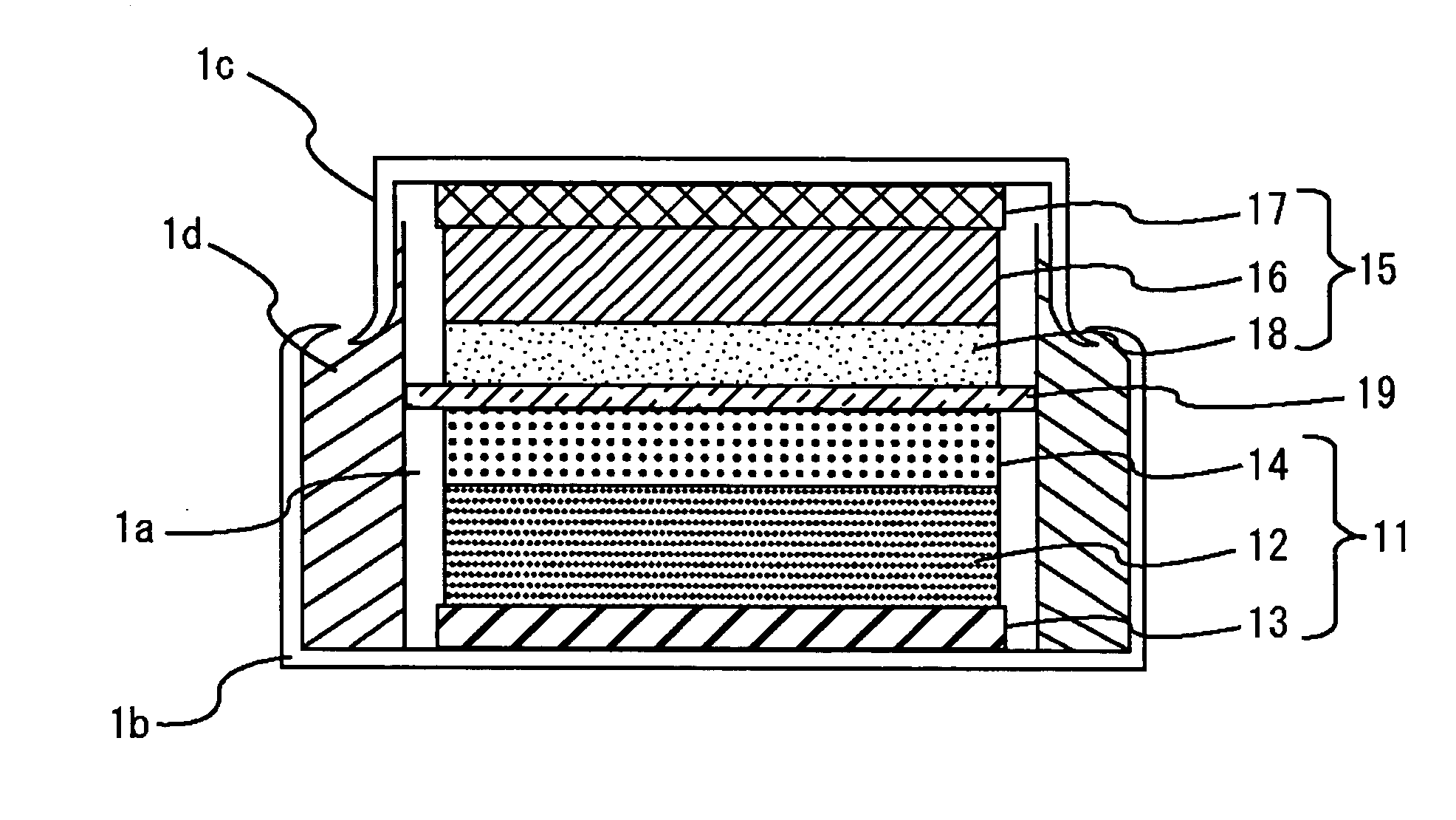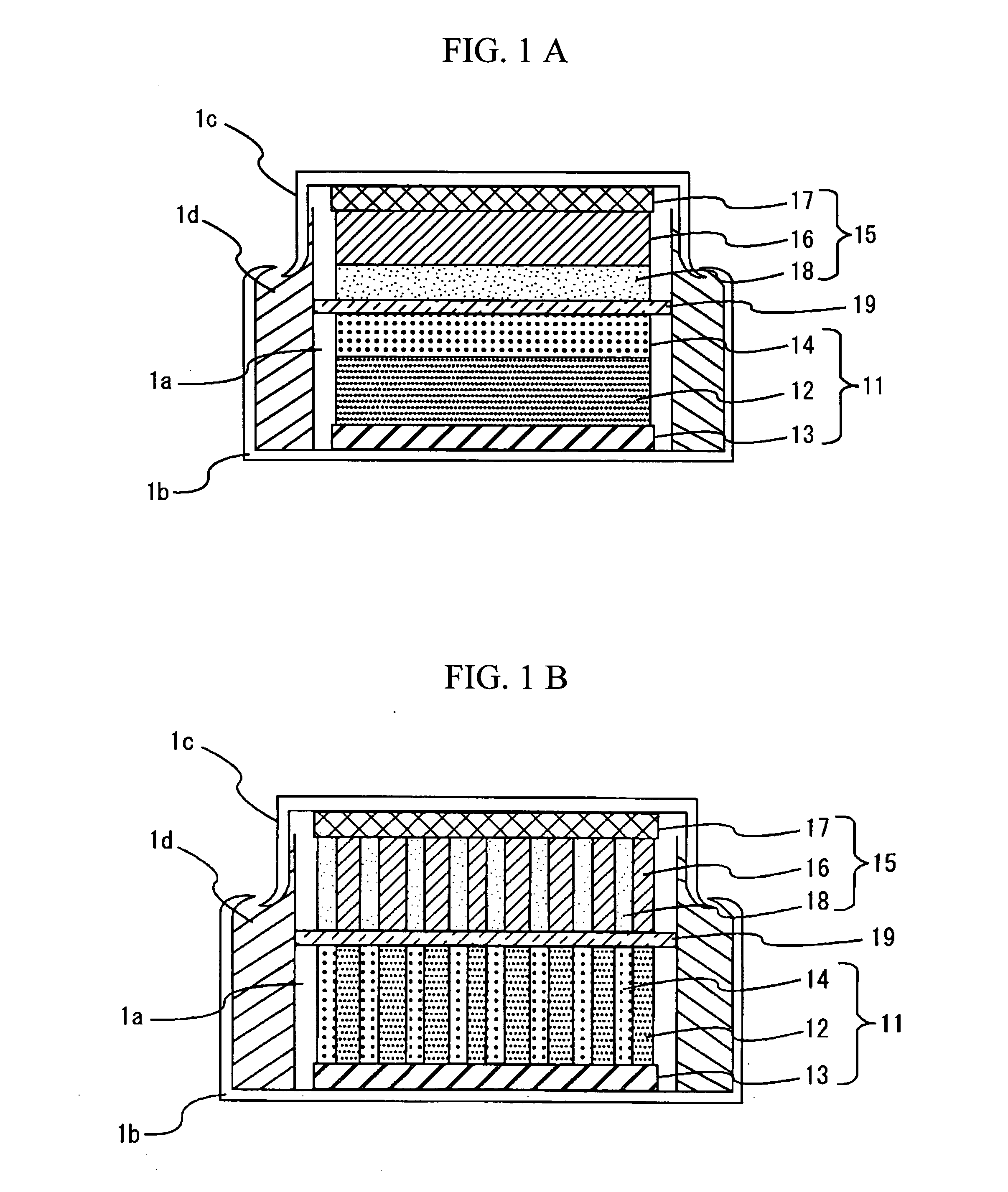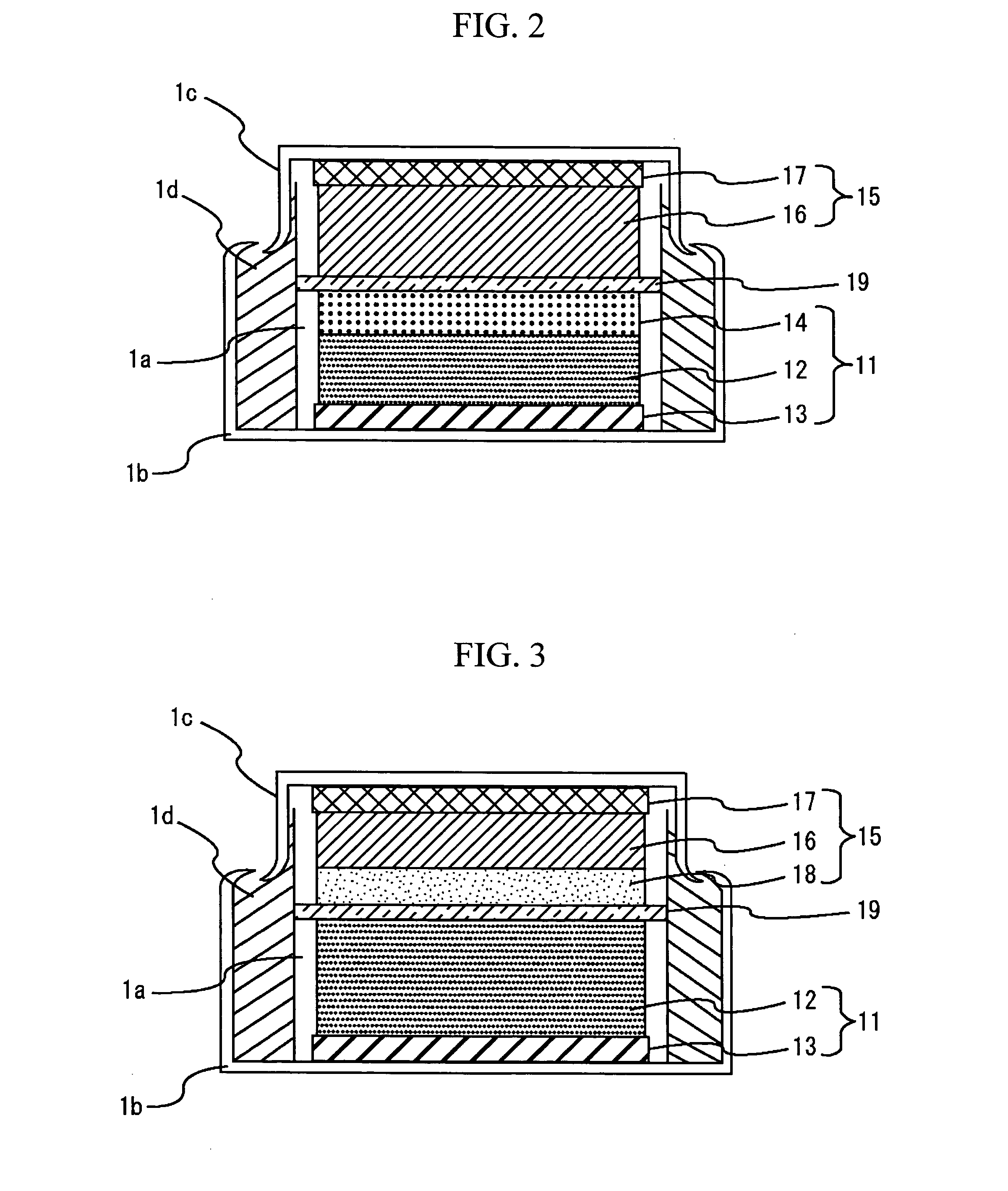Energy device
a technology of energy devices and energy density, applied in the direction of non-aqueous electrolyte cells, cell components, sustainable manufacturing/processing, etc., can solve the problems of poor charge/discharge characteristics of conventional secondary batteries at large currents, and low energy density of electric double layer capacitors. , to achieve the effect of excellent input/output characteristics
- Summary
- Abstract
- Description
- Claims
- Application Information
AI Technical Summary
Benefits of technology
Problems solved by technology
Method used
Image
Examples
example 1
[0058] A coin type energy device with the configuration of FIG. 2 was made. The positive-electrode faradic reaction layer 12 was prepared as follows. The positive electrode active material was formed of Li1.05Mn1.95O4 with a mean particle size of 10 μm. The conductant agent was formed of a mixture with a weight ratio of 4:1 of graphite carbon with a mean particle size of 3 μm and specific surface area of 13 m2 / g, and carbon black with a mean particle size of 0.04 μm and specific surface area of 40 m2 / g. Using a binder made by dissolving 8 wt. % of polyvinylidene fluoride in N-methylpyrrolidone in advance, the positive electrode active material, conductant agent, and polyvinylidene fluoride were mixed to the weight ratio of 85:10:5, and the mixture was sufficiently kneaded, thereby obtaining a positive-electrode slurry. The positive-electrode slurry was applied to one side of positive-electrode collector 13 composed of an aluminum foil with a thickness of 20 μm and dried. The positiv...
example 2
[0060] An energy device was prepared in the same manner as in Example 1 except that the weight ratio of the positive electrode active material, conductant agent, polyvinylidene fluoride, and activated charcoal to the total weight of the positive-electrode faraday 12 and the positive-electrode non-faradic reaction layer 14 was 74:10:6:10 and the weight of the activated charcoal was 10 wt. %.
example 3
[0073] A coin type energy device with a configuration shown in FIG. 7 was made. For a positive-electrode faradic reaction layer 12, the positive-electrode slurry of Comparative Example 1 was applied to one side of a positive-electrode collector 13 consisting of an aluminum foil with a width of 1 mm and a thickness of 20 μm, leaving uncoated regions at 1 mm intervals, and the thus applied layer was then dried. Activated charcoal with a specific surface area of 2000 m2 / g and carbon black with a mean particle size of 0.04 μm and a specific surface area of 40 m2 / g were mixed to a weight ratio of 8:1. Using a binder consisting of a solution prepared by dissolving 8 wt. % of polyvinylidene fluoride in N-methylpyrrolidone in advance, the activated charcoal, carbon black, and polyvinylidene fluoride were mixed to a weight ratio of 80:10:10 and sufficiently kneaded, thereby preparing a slurry. The slurry was applied to the uncoated regions on the positive-electrode collector 13, thereby form...
PUM
| Property | Measurement | Unit |
|---|---|---|
| temperatures | aaaaa | aaaaa |
| temperatures | aaaaa | aaaaa |
| diameter | aaaaa | aaaaa |
Abstract
Description
Claims
Application Information
 Login to View More
Login to View More - R&D
- Intellectual Property
- Life Sciences
- Materials
- Tech Scout
- Unparalleled Data Quality
- Higher Quality Content
- 60% Fewer Hallucinations
Browse by: Latest US Patents, China's latest patents, Technical Efficacy Thesaurus, Application Domain, Technology Topic, Popular Technical Reports.
© 2025 PatSnap. All rights reserved.Legal|Privacy policy|Modern Slavery Act Transparency Statement|Sitemap|About US| Contact US: help@patsnap.com



